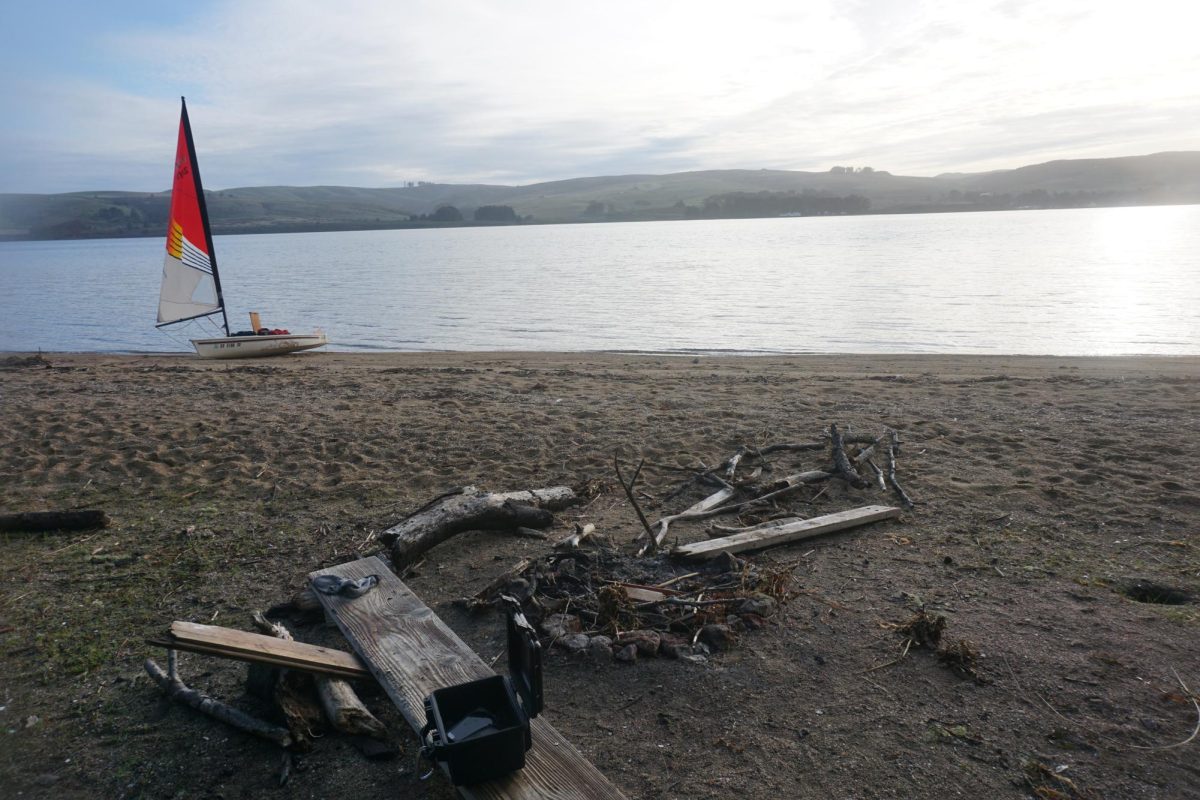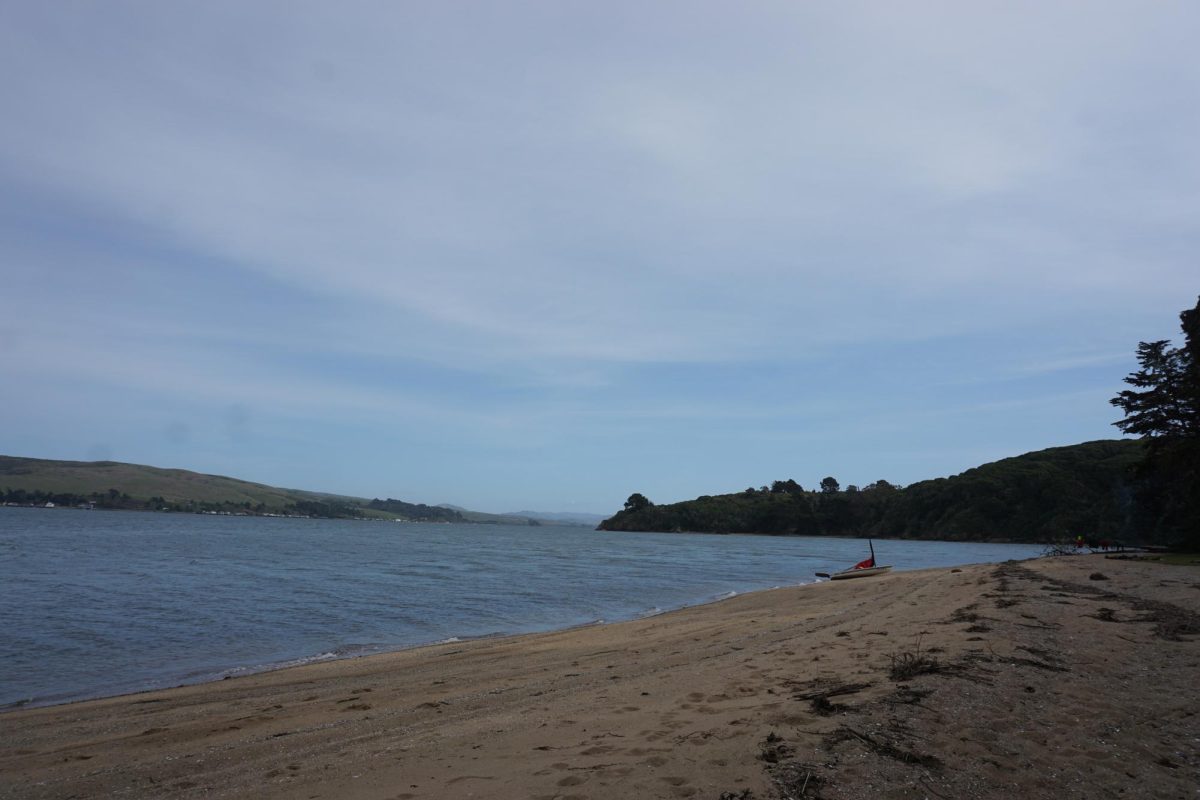Camping by boat on the Point Reyes National Seashore is an accessible adventure that offers a chance to test your mettle despite its proximity to civilization, and it’s close enough to home to make it a realistic last-minute adventure but remote enough to be worthwhile.
Point Reyes National Seashore is a 71,000-acre preserve south of Bodega Bay. While most of its hike-in backcountry campsites are notoriously hard to get reservations for, there are plenty of isolated beaches on the Tomales Bay side accessible only by boat but much easier to snag a last-minute reservation for.
Worried about midterm results, itching for excitement and hoping to spend a night under the stars, it was the perfect impromptu highlight of my spring break 2025.
Camping here is a great adventure, but never a wilderness one – wherever you go, you will see houses, cars and dairies across the water. I also had enough cell service to text home, which is nice if you need to call for help, but I hated having to fight the compulsive urge to check my email.
Reservations are necessary and sites cost $30 a night for groups of up to six people, a bit steep for totally undeveloped sites, but the price includes overnight parking at Miller Boat Launch with a printed reservation on your dashboard.
Other than a standard gear list for low-key backpacking, I had to bring three special pieces of gear for the trip: a portable toilet (I bought a $3.50 WAG bag at Sports Basement), sufficient water for the whole trip (I took one gallon total in reusable water bottles for an overnight trip, which was plenty) and, of course, a boat.
This presents the biggest hurdle for cash-strapped students trying to get away from it all. Short of renting a kayak from Tomales Bay Expeditions or Blue Waters Kayaking, you will need to own, buy, borrow or steal something seaworthy enough a 1.5 mile or more crossing.
I took my 13-foot sailing dinghy. This gave me more speed and range, but added complexity to my trip. Whatever boat you take, make sure you know how to use it – good seamanship is always a personal responsibility.
Keep an eye on the weather, especially when planning your trip. I like to use PredictWind, but similar apps work just as well; for the most part, they are all displaying the same data.
The local rule of thumb for Tomales Bay is to go early: mornings are usually calm, with the wind picking up in the afternoon, and my experience bore this out.
With only one night away from regular life, I nevertheless tried to stop on as many beaches as possible.
Most of the beaches where the NPS allows camping are pretty poor. Pita Beach, for example, had a beautiful site on a sandy gravel beach but was windy and would necessitate pulling your boat through about 100 yards of stinking black mud at low tide. White Gulch was overgrown, and North and South Elk Beach simply didn’t have a lot of dry ground high tide. Don’t forget to bring a tide table and make sure that your boat is above the tideline before going to sleep.
Other than Marshal and Tomales beaches, which have pit toilets and picnic tables, most sites have nothing more than a stone fire ring, which was all I needed — or wanted — for my escape from civilization.
My spot was just south of the elk fence, on a long sand and gravel beach protected from the northerly winds by a small headland. It was late March, and the trees abutting the beach were a deep green instead of their summer brown. I was wet and cold when I landed, but the beach soon felt like home.
Entertainment, once you safely arrive, will generally need to come from within. Access to hiking once you find the perfect campsite is spotty, and once again, Marshal and Tomales beaches are the most connected spots. They have trails to Pierce Point Road, which will take you to the McClures Beach Trailhead and the Tomales Point Trail.
Fishing, an activity I have very little expertise in, is another popular way to spend time on the bay; according to a fisherman friend of mine, perch and halibut are popular quarries.
I spent a couple of hours sailing back and forth in the building winds. By the time I made it to shore and set up camp, I was ready to take it easy and cook a leisurely dinner.
Reading a slightly-soaked paperback by the fire as the sun set and watching the lonely lights of cars threading down Shoreline Highway across the bay, I felt alone and not alone at the same time. The place feels timeless, but is also clearly changing.
But that’s the essence of camping by boat on Tomales Bay: it’s all a push and a pull.
Small boat sailing requires a dedicated single-mindedness, but I was worried about my midterm results.
While debates about the future of the seashore’s conservation rage, it remains a piece of land shaped by human efforts.
For all of the park’s proximity to civilization in the form of upscale restaurants and dairy farms, crossing the bay requires good judgment on a sometimes-dangerous piece of water.
That tension, that push and pull, is camping by boat on Tomales Bay.
I highly recommend you experience it for yourself.





